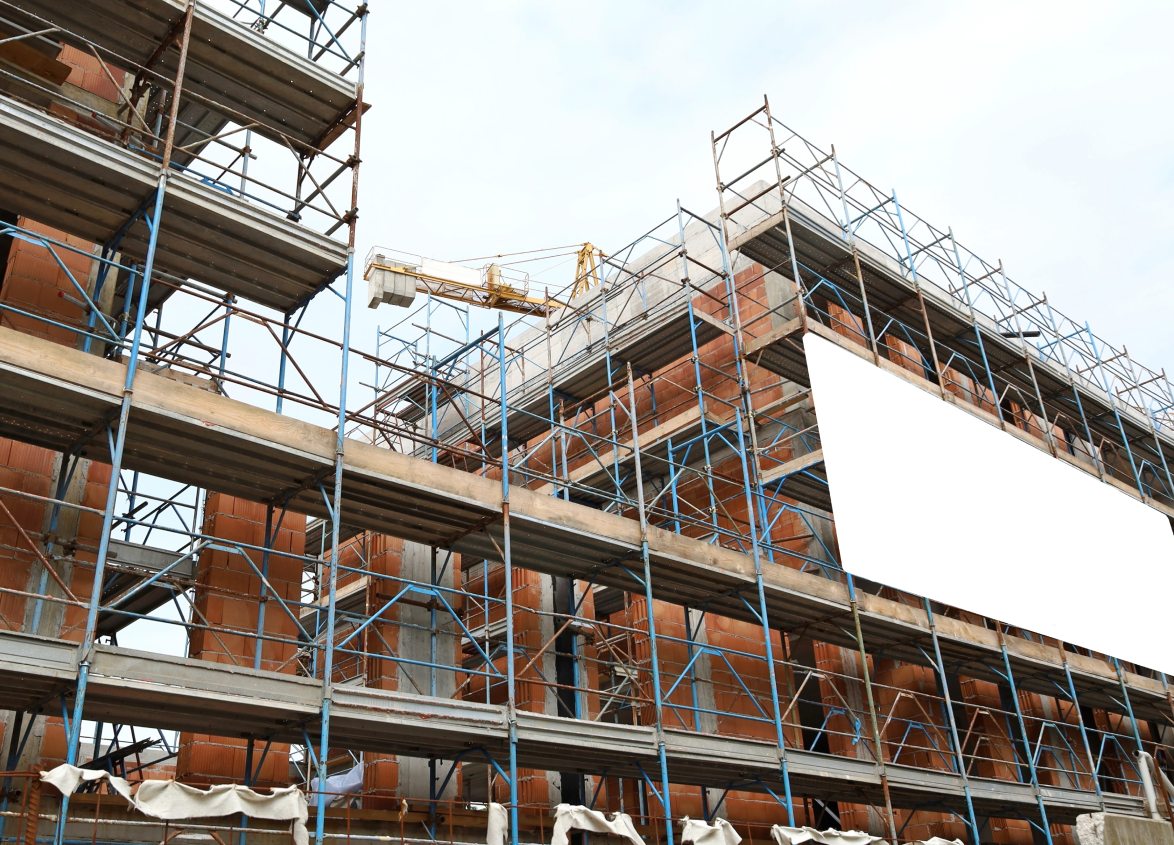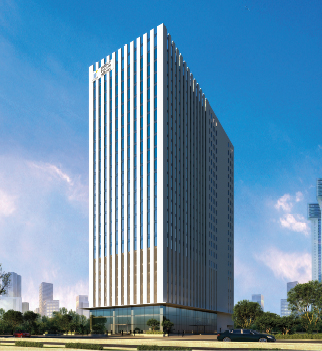
Commercial
Essential Fire Safety Norms Every Commercial Building Must Follow
February 11, 2025
Fire protection is an important issue for each commercial facility, where people's lives, property, and the company's operations are in danger. Since commercial buildings accommodate many people, the dangers of fire accidents are very high.
Adopting sound fire safety measures goes hand in hand with complying with legal requirements, thus reducing the potential odds of people getting injured, burned, or killed and property being destroyed or burned. Fire safety norms for commercial buildings in India are governed by the NBC (National Building Code) and the fire department for prevention, detection, suppression, and evacuation in case of fire.
From implementing improved fire detection systems and ensuring clean and unobstructed corridors and stairwells to practising fire drills, compliance with the listed norms is crucial to offering security assurance. In the last few years, technological advancements have advanced fire safety with automated solutions regarding detecting, monitoring, and suppressing fire risk.
This article discusses the important fire safety norms every commercial building must follow to safeguard lives, property, and businesses. Proactively gaining knowledge of and applying the principles and processes outlined in the commercial building fire safety guidelines for O&M personnel and other staff members is essential to compliance and the primary survival of any building. Fire protection today can save a lot of trouble in the future.
Understanding Fire Safety Norms
Fire safety refers to the set of practices, protocols, and measures implemented to prevent, detect, and manage fire incidents and safeguard people and property. Because of its high occupancy, valuable assets, and considerable risks posed by fire hazards, fire safety is a vital aspect of the commercial real estate industry. Fire prevention measures help organisations continue operations, cut losses, and, most importantly, save lives.
Fire Laws and Regulations Affecting Commercial Structures
In India, the commercial building fire safety guidelines under the NBC contain provisions regarding fire protection, fire resistance, and evacuation plans. Local state fire departments ensure that laws require that commercial buildings obtain a Fire Safety Certificate.
Important norms include well-labelled fire extinguishers, smoke detectors, fire alarms, sprinkler systems, and emergency exits. To ensure conformity, regular fire audits, staff training, and regular maintenance checks are compulsory. These laws help avoid legal penalties and provide a safe environment for businesses' occupancy and operations.
Fire Prevention Systems
Fire prevention systems are the initial barriers against possible fire risks in business premises. Therefore, smoke detectors, fire alarms, and sprinkler systems are part of these systems, which are mainly aimed at quickly detecting fires and avoiding maximum losses. The fire safety measures can greatly improve the readiness of commercial buildings, save lives, and meet the requirements of the legislation.
Emergency Exits
Emergency exits are very important because they help you evacuate faster whenever there is a fire outbreak. Exit routes in all commercial buildings shall be marked, lit, and free from obstruction. They should be offered in every story and made available to everyone, including the disabled.
Exit routes shall remain clear of any obstruction; signs indicating "Exit" shall be legible even in smoke conditions. Emergency staircases should be fire-resistant and kept clean, as elevators may be unusable in case of fire. Adherence to the measures greatly reduces injuries when evacuating.
Fire Extinguishers
Fire extinguishers are equipment used to fight small fires before they become unmanageable. They must be fitted in commercial buildings in easily seen and conspicuous places, with instructions on operating them. The type of extinguisher must be matched to the possible fire hazards, such as Class A for paper and wood fires, Class B for flammable liquids, and Class C for electrical fires.
Employees must use fire extinguishers during emergencies, so they must be trained to do so. Since extinguishers rely on a charged solution, they need to be refilled at regular intervals to guarantee that they will function as required. Negligence or the loss of fire safety measures due to poor planning may lead to the loss of the whole building. Therefore, their use is essential in a commercial context.
Fire Door
Fire doors significantly reduce the spread of fire and smoke inside a building. They can remain closed even in cases of fire to keep the fire and smoke enclosed, helping individuals evacuate the house before much damage occurs. Fire doors must meet definite fire-resistance standards and are always unobstructed.
Commercial buildings must ensure fire doors are placed in the riskiest zones, such as stairwells, corridors, and access points to fire-prone zones. Periodic inspection is very important to validate the fire door's integrity, from the frame to the hinges and automatic closing devices. Non-compliance with the fire safety regulations for commercial buildings risks the safety of the people in a building during emergency cases.
Fire Drills and Training
Education and evacuation drills are crucial for learners and employees to understand how to act in case of fire and all the activities they must control. Annual fire drills help employees become more acquainted with escape routes, exits, and fire-fighting gadgets.
Training events include fire protection measures, fire extinguishers, and actions to take while in a fire-trapped area. Firefighting simulation exercises reveal discrepancies in the fire safety plan. When fire drills are done correctly, employees feel assured and do not panic during emergencies, and everyone can leave the building safely.

Significance of the Fire NOC
A Fire NOC is a legal document confirming that a building conforms to fire safety standards provided by the state fire department and the NBC. This means that the commercial building has basic fire prevention and protection measures to safeguard the occupants in case of a fire accident.
The NOC is also very crucial for the commercial buildings since it has legal, safety, and operational consequences. It also covers compliance with the fire safety precautions and fire fighting equipment such as fire extinguishers and fire alarms, fire fighting sprinkler system, fire exits and other fire preventive measures.
The Fire NOC also gives a business more believability, proving that it cares and complies with the standards. The document is also very important in acquiring insurance for commercial buildings because most insurance companies require proof of fire fighting measures.
Failure to get a Fire NOC leads to legal implications, revocation of business licenses, and increased liability in case of fire incidents. Hence, the Fire NOC is very important in protecting property, lives, and business continuity.
Procedures for Securing Fire NOC in Commercial Buildings
Submission of Application: The owner of a building applies to the fire department. The applicant may also submit additional papers like building plans, layouts, structural details, and other proof of ownership documents.
Compliance with Building Plans: The submitted building plan must meet the fire safety standards set by the National Building Code.
Installation of Fire Safety Systems: All fire safety equipment is supposed to have been fitted before the department inspects the property.
Inspection by Fire Department: The fire department officials physically inspect the building to check whether all the fire safety measures have complied with the approved plan.
Fire NOC issuance: Once the fire safety standards are met, the fire department issues the Fire NOC. The NOC is valid for a specified period and must be renewed to maintain compliance.
Responsibilities of building owners and authorities in compliance with fire safety standards
In commercial buildings, building owners and authorities are primarily responsible for enforcing fire safety standards. Their duty is to protect occupants, their property, and businesses within the property by ensuring compliance with standards set for fire safety according to the National Building Code and statutory fire departments.
Every person with property or ownership of buildings is legally required to install and maintain standard fire alarms, smoke detectors, sprinkler systems, and fire extinguishers and to check them regularly. They are also involved in procuring mandatory certifications such as the Fire NOC and making sure they renew them on time.
Management of the property by authorities has to conduct fire audits and inspections to see if there is any issue with the fire fighting equipment, as well as ensure that corrective measures on the issues highlighted are taken within the shortest time. Our people need to be ready when the emergency strikes; therefore, fire drills and many other types of safety training are necessary for employees and occupants. Compliance is further improved by engaging the local fire departments to conduct regular inspections of premises and put into practice what is advised as far as safety is concerned.
Guidelines for the Adoption and Enforcement of Fire Protection Measures in Business Premises
Fire safety is a legal requirement that protects the lives of occupants, reduces property loss, and improves business resilience.
Regular Fire Safety Audits: assist in determining potential risks, allow for inspection of the operational condition of the fire protection equipment, and briefly examine the building's general fire readiness.
Employee Training and Awareness: It is very important to train employees regularly on fire safety, including instructions on using fire extinguishers, understanding fire alarms, identifying evacuation routes, and responding to a fire emergency.
Improvement of Fire Safety Systems: With advancing technology, safety fire equipment also becomes more effective and reliable. The new fire alarms, sprinklers, smoke detectors, and fire extinguishers work at a better pace and keep meeting the new standards regarding performance.
Clear Emergency Exit Routes: Emergency exit routes must be unobstructed, illuminated, and clearly identified with easy-to-see signs of existence. The passageways, such as hallways or stairwells, connecting to exits shall be sufficient in width for the possible flow of people. The fire exits must be fire-rated doors to prevent the spread of flames and smoke.
Keep Fire Safety Equipment: Fire extinguishers, smoke detectors, sprinklers, and fire alarms require regular testing and servicing to remain effective. Sprinkler systems must also be inspected annually for leaks, blockages, and adequate coverage.
Document and Review Fire Safety Procedures: Fire safety procedures must be reviewed and updated periodically. Recording inspections, audits, training sessions, and drills helps ensure compliance and provides a reference during emergencies.
Conclusion
Fire safety is one of the indispensable aspects of managing commercial buildings. Essential fire safety norms followed by the owners and managers of the building protect lives, assets, and businesses while also satisfying legal requirements. Every component-from fire prevention and detection systems to emergency evacuation plans and staff training to reducing the risk of fire.
Integrating advanced fire-resistant materials, suppression systems, and smart technologies with commercial buildings ensures that modern construction has better preparedness measures to handle fire emergencies. With the challenges of very high fire safety costs and maintenance, the money paid is worth it just for the security, compliance, and resilience of the space.
As Bangalore and other cities worldwide grow, commercial buildings cannot afford to overlook fire safety. Commercial space can contribute to ensuring that all goods are kept safe and secured effectively to avert adverse impacts.

FAQs
1. What are the norms for fire safety?
Fire regulations require structures to have protective components such as alarms, sprinklers, extinguishers, well-lit exitways, practice drills, and fire-resistant structures. These norms aim to reduce fire risks within buildings and ensure the safety of the occupants.
2. What are the fire safety requirements of a commercial building?
Commercial buildings have to meet the fire safety requirements, which include the installation of fire alarms, smoke detectors, fire extinguishers, sprinkler systems, and emergency exits. There must be a fire safety plan, including evacuation routes, signage, and periodic fire drills, to ensure prompt action in an emergency.
3. Why is regular fire safety auditing important in commercial buildings?
Regular fire safety audits help identify potential hazards, ensure compliance with safety regulations, and verify that fire prevention systems are in proper working condition. They ensure a safe environment, reduce risks, and make sure fire safety measures are current.
4. How do I ensure my commercial building complies with local fire safety regulations?
To comply with local fire safety regulations, ensure your building has all the required fire safety systems, such as alarms, sprinklers, and extinguishers. Conduct regular fire safety audits, comply with building code requirements, and obtain necessary certifications.
5. How can technology enhance fire safety measures in commercial buildings?
Technology can enhance fire safety through advanced fire detection systems, smart sprinklers, and real-time monitoring of fire alarms. Automated systems will enable faster alarm sounding and activation of the fire suppression systems, and data analytics will assist in risk identification before it becomes critical.
6. Do Brigade properties have an NOC for fire and pollution?
Yes, all Brigade Properties have a no-objection certificate (NOC) from the Pollution Control Board and the Fire Department to verify conformance with environmental standards and fire safety laws, before getting an occupancy certificate (OC).
MUST READ
Looking for something specific?
We'd be delighted to help you.





























































































































































































































































































































































































